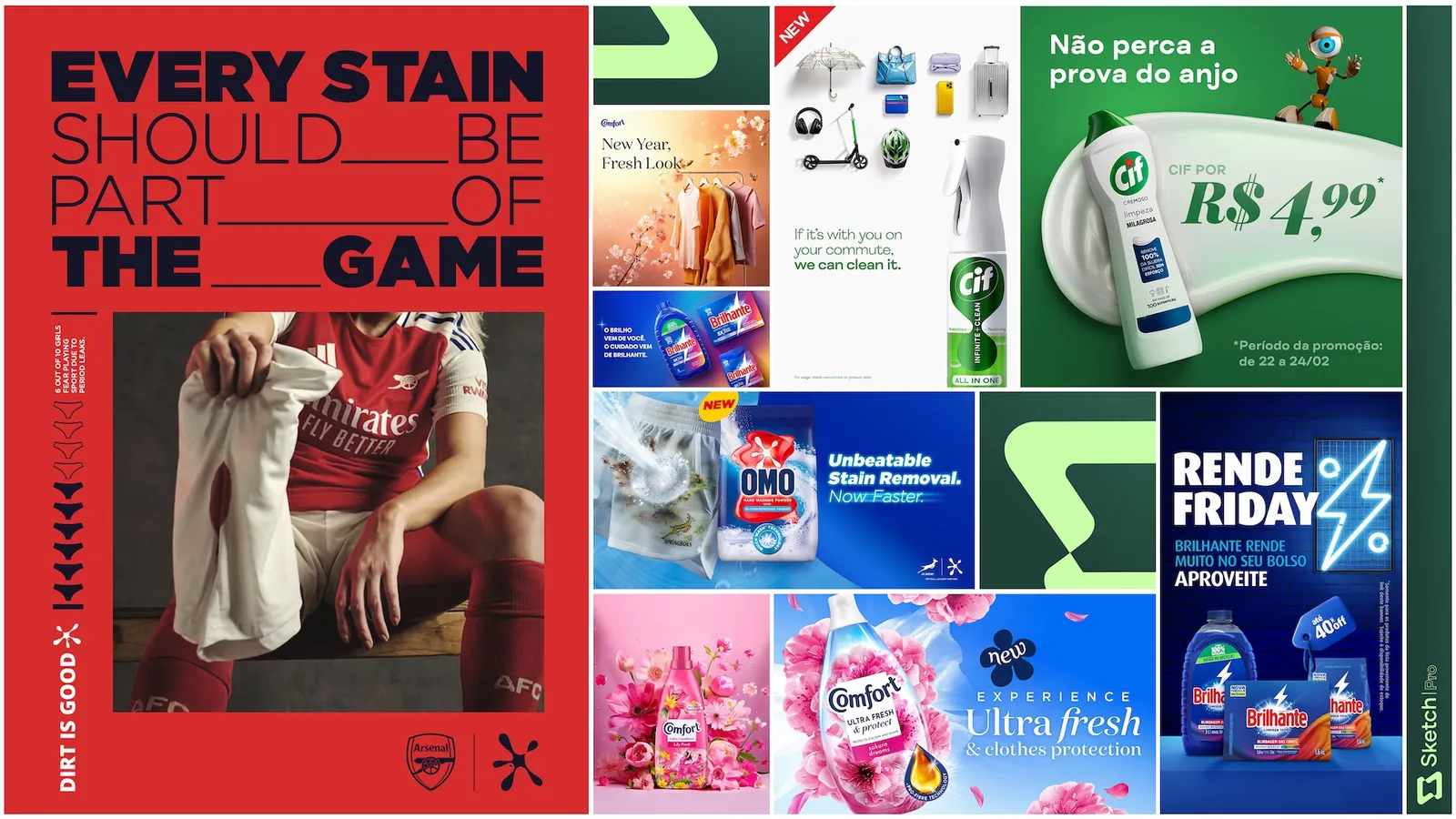Some relatively new considerations for your IG strategy.
* This article was originally published here
Make Money Online Fast Discover proven ways to make money online quickly with affiliate marketing, legit side hustles, digital courses, and expert tips. Learn how to start earning today — no experience needed. Explore honest reviews of top programs, essential tools, and high-converting strategies to build income from home or anywhere in the world. Perfect for beginners, side hustlers, freelancers, and anyone ready to create real financial freedom.
Introduction Want to make money online fast? Whether you need extra cash or want to build a full-time income, the internet offers endless ...
Some relatively new considerations for your IG strategy.
This could be an important branding opportunity for the app.
Some key notes to keep in mind for H2 planning.
Another option to manage your TikTok updates.
Picture this: It’s 10 p.m., you’re researching a complex purchase, and you stumble on a three‑minute video that finally explains — in plain English — what drives the price up or down. Instantly, you feel lighter. You’ve found a brand that gets you.
That moment of relief is exactly what your buyers crave.
If you’ve embraced The Big 5™ in written form, you already know that answering the hard questions is the fastest way to build trust online. But buyers don’t live on blog posts alone.
They stream. They binge. They forward links to teammates. And more often than not, they do it on YouTube, the world’s second‑largest search engine.
At IMPACT, we’ve helped hundreds of mid‑market companies turn YouTube into a sales accelerator. The playbook is surprisingly simple: translate each Big 5 topic into a distinct video style. Nail these five formats and you’ll meet buyers where they’re most comfortable — face to face, before you ever hop on a call.
Ready? Let’s roll the camera.
Editor’s note: The Big 5™ (Cost & Price, Problems, Versus & Comparisons, Reviews, Best‑in‑Class) sit inside the “Talk” pillar of the Endless Customers System. Bringing them to video lets you Show as well as Talk, doubling the trust impact.
Below you’ll find the five YouTube video types that map directly to The Big 5. For each, we‘ll cover why it works, how to produce it, and a real‑world example from an IMPACT client or community member.
Why they work
Money questions keep buyers up at night. A clear, honest cost video turns anxiety into appreciation and positions your brand as the straight‑shooter in your space.
What to film
Production tips
Example in action
Why they work
Addressing drawbacks shows buyers you value truth over spin. Problems videos weed out poor‑fit leads and attract serious prospects who respect candor.
What to film
Production tips
Example in action
Why they work
Buyers inevitably stack options side by side. Do it for them and you own the narrative.
What to film
Production tips
Why they work
Social proof on steroids. A balanced review signals maturity and positions your team as sherpas, not shills.
What to film
Production tips
Example in action
Why they work
Buyers start with “best” searches to map the landscape. By curating the field, you become the default guide.
Here are some common phrases customers search for when looking for the “best”
|
|
What to film
Production tips
Example in action
Creating these five video types will not break the bank, but they will break the ice with skeptical buyers.
Start with Cost & Price (it’s the fastest trust win), then aim to publish two new Big 5 videos per week. Within just a few months, you’ll own more of the buying conversation than competitors who spend twice your ad budget.
Your buyers are already on YouTube. Start filming The Big 5 today and turn silent browsers into educated, confident prospects who want to talk to your sales team.
At IMPACT, we coach businesses just like yours in the Endless Customers System™–a proven approach that puts video at the heart of your sales and marketing. We’ll help you build a YouTube presence that educates buyers, builds trust, and drives real revenue.
If you're ready to stop guessing and start growing with YouTube, let’s talk.
A new option to extend the look and feel of TikTok beyond the app.
Some pointers for your Facebook and IG Reels approach.
You already know YouTube is a great platform for reaching buyers. Lately, though, every conversation seems to circle back to YouTube Shorts.
Colleagues keep saying their feeds are packed with these bite‑sized vertical clips, and audiences can’t get enough of them. So, which format should your team lean into?Shorts and long‑form each do a different job, and your greatest ROI comes when they work together.
In this article, we’ll break down exactly how to make that happen, step by step.
Think of Shorts as your brand’s introduction. Make them quick, friendly, and impossible to ignore. They’re a low‑commitment invite that stops the scroll and lets viewers sample your expertise in under a minute.
Use them to surface a pain point, offer a glimpse of the fix, and leave people hungry for the deep dive.
Here is why Shorts deserve a permanent spot in your mix:
Shorts spark curiosity, but curiosity alone rarely signs a purchase order. When prospects are weighing real dollars (or their reputation), they look for deeper proof.
Long-form videos give you the runway to teach, demonstrate, and answer every silent objection, so viewers finish feeling confident and ready to act.
Here are four reasons to focus on long-form video on YouTube:
When you treat Shorts and long‑form as teammates, you meet buyers at every point in their journey. Here’s a simple playbook you can follow without adding extra hours to your workflow:
Follow this cadence and you’ll create quick wins that spark curiosity and deeper assets that seal the deal.
Repurposing workflow for zero burnout and maximum output
Small marketing teams don’t have time to reinvent the wheel for every platform. Repurposing lets you squeeze more value from each long‑form video, multiplying your output without multiplying your workload.
How do you know if your strategy is working? Track these metrics, then double down on what moves viewers closer to a purchase:
Common pitfalls (and how to dodge them)
By executing the perfect blend of Shorts and long-form video on YouTube, your video strategy will be headed for greatness.
Still feel like you need some help with this?
That’s where we come in. At IMPACT, we coach businesses just like yours in the Endless Customers System™–a proven approach that puts video at the heart of your sales and marketing. We’ll help you build a YouTube presence that educates buyers, builds trust, and drives real revenue.
If you're ready to stop guessing and start growing with YouTube, let’s talk.
YouTube is looking to help channels secure brand partnership deals.

Sketch Pro aims to deliver social-first content three times faster with help from AI tools like Google’s Veo 3.
More ways to customize your Bluesky experience.
When was the last time that you updated your passwords?
TikTok continues to push hard to get more people to buy things in-stream.
A simpler way to check for potential copyright violations before publishing.
TikTok will host a range of exclusive content and activations.

The case relates to criticism of a transgender person in the app.
What do you do when your sales team turns over completely, your product is highly technical, and your buying process involves multiple decision-makers across a long sales cycle?
How do you rebuild momentum when marketing and sales feel completely disconnected?
Most companies stall out. Some even freeze entirely.
But not Strouse, a B2B manufacturing company that converts adhesive materials for industries ranging from automotive to electronics.
They didn’t just survive a complete sales team rebuild. They used it as a launchpad to build stronger alignment, shorten their sales cycle, and start winning with content that actually drives revenue. In this episode of Endless Customers, I sat down with Lee House, Content Marketing Manager at Strouse, Zach Tracey, Territory Manager at Strouse, and Lindsey Auten, IMPACT Coach, to unpack how a single bi-weekly meeting changed everything.
We’re talking about revenue team meetings. They sound simple. But for Strouse, they became the cornerstone of a system that aligned sales and marketing, empowered new reps, and produced real pipeline from content.
Too often, these meetings are the missing link. Marketing and sales both do their jobs, but if they’re not talking regularly and strategically, results flat line.
If your sales team feels disconnected from marketing or if turnover has ever thrown your momentum off course, this episode will show you how to rebuild with clarity and confidence.
Let’s get into it.
At a glance, revenue team meetings might sound like your typical cross-department sync. But in practice, they go much deeper.
Lee described them as "a weekly or bi-weekly meeting that brings together marketing, sales, and leadership to get aligned on the content we’re producing, the conversations sales is having, and what we need to do next."
Each meeting follows a consistent structure:
That rhythm creates stability and, over time, trust. Everyone knows what to expect, and more importantly, how to contribute.
For Strouse, it created a shared space where marketing could directly hear what sales needed. Sales could give input on content. And leadership could see progress and identify roadblocks before they became problems.
Zach put it: “It changed how we talk to each other. Before, there was a lot of guesswork. Now we’re on the same page.”
This shift impacts execution. Goals become clearer. Ownership is shared. And collaboration gets easier because everyone understands the role they play in driving revenue.
Strouse didn’t just deal with some changes in sales personnel; they experienced a full turnover of their sales team.
Team turnover isn’t unusual, but a complete rebuild of your sales team? That’s the kind of disruption that can completely derail momentum and create major confusion around priorities.
But not at Strouse.
Here’s what made the difference: they weren’t building their process on individual people. They were building it on a system.
Because the revenue team meetings were already in place, the marketing team stayed on track. Content production didn’t pause. Campaigns didn’t get shelved. And when new reps came in, they had a fast track to learn what mattered.
As IMPACT Coach Lindsey Auten said, “You don’t have to start over when someone leaves. The system keeps the machine running.”
And that’s exactly what happened. New reps could step into a structure that helped them understand what content existed, what buyers cared about, and how marketing could support them in conversations.
That meant less time getting up to speed and more time having productive calls.
It also meant that the learning curve didn’t hold back the rest of the team. Marketing wasn’t waiting for direction. They were already aligned and moving forward.
Assignment Selling is a simple idea with a big impact. At its core, it’s about sending prospects the right piece of content before a sales conversation, so they show up informed, focused, and more ready to buy.
Zach shared that he uses it before every meeting. “I send content before every call now,” he said. “It sets the tone and gets people thinking more clearly. They come into the meeting already understanding key points.”
That means sales calls skip the surface-level education and get to meaningful next steps. Sales cycles get shorter. And reps spend less time answering the same questions over and over again.
But Assignment Selling only works when the right content exists, and that’s where the meetings come in.
Because sales and marketing were regularly collaborating, the content being created actually matched what buyers were asking. Articles on pricing, comparisons, problems, and processes were not only useful on the website; they became tools for reps in the sales process.
This alignment made it easy for Assignment Selling to become part of Strouse’s culture. Reps didn’t have to dig through a cluttered blog or guess which article fit. They already knew what to send because it had been discussed and planned as a team.
We all love a good success story, but metrics seal the deal.
Lee shared that both traffic and leads were trending upward. In a space as niche and technical as Strouse’s, that’s a big win. But the biggest moment came when one article led directly to $200,000 in revenue.
That’s not a vanity number. That’s an actual client who read a piece of content, reached out, and signed a deal.
How? It was a topic that sales had flagged during one of their meetings. The marketing team turned it into a clear, helpful article that answered key questions and addressed real concerns. Sales used it as part of their outreach and conversations. And it worked.
Lindsey put it perfectly: “When your content is strategic and aligned with what sales needs, results follow. Every time.”
The combination of regular meetings, strategic content planning, and consistent usage in the sales process created a flywheel of growth, a steady, measurable improvement that compounds over time.
Alignment isn’t something that just happens once during a quarterly planning session. It’s a practice. A weekly habit. And when done well, it builds a culture of clarity and momentum.
Strouse didn’t need more tools or different people. They needed structure. And they built it with one consistent, strategic meeting.
If you’re in a similar spot, struggling with communication between sales and marketing, trying to bounce back from turnover, or just not seeing traction, here’s what we’d recommend:
These steps won’t just improve communication. They’ll change how your team thinks, plans, and performs.
Strouse’s journey shows that even complex B2B companies with long sales cycles can generate consistent, measurable growth. You just need the right rhythm.
Most companies don’t struggle because their teams aren’t working hard. They struggle because sales and marketing are working in silos, following different plans, chasing different goals.
That’s where Strouse started: scattered efforts, inconsistent results, and no clear system to bring it all together. But once they committed to the Endless Customers System™, aligned their teams through revenue team meetings, and focused on building trust over time, everything began to shift.
If your sales and marketing efforts feel disconnected or even in competition, it’s time for a new approach.
What if your teams planned together, met regularly, and held each other accountable to the same goals?
That one change created momentum for Strouse. And it didn’t require a new budget or a bigger team. Just a commitment to show up, align, and improve together.
They proved it’s possible. And if they can do it, so can you.
Check out Strouse
Connect with Lee House on LinkedIn
Connect with Zach Tracey on LinkedIn
The change is in line with new regulations in the region.
Another consideration for your X campaigns.
The report looks at the value Snap can provide for electronics marketers.

Meta's support for U.S. President Donald Trump may pay off as its pushes back against regional taxes.
X has added its 18th Originals program as it continues its video push.